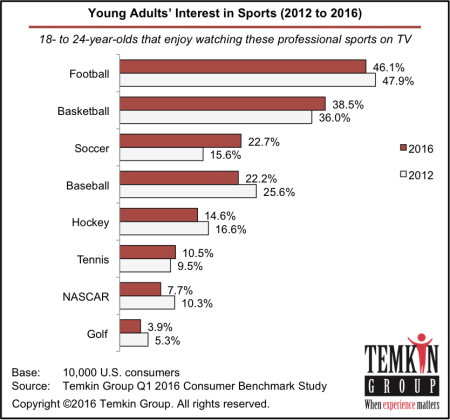Off Topic: Who Are NFL Fans?
September 11, 2016 Leave a comment
Today is the first Sunday of the 2016 NFL season. (Go Pats!)
So I tapped into our Q1 2016 benchmark of U.S, consumers to look at the make-up of NFL fans, examining the consumers who say they like watching the NFL (and other pro sports) on TV. As you can see in the chart below:
- NFL is the king of U.S. pro sports. The appeal for football is more than 20-points higher than baseball and basketball.
- Older males love the NFL. Males of every age like to watch football more than their female peers, and the level of interest increases with every increase of age. For females, 45 to 54 is the prime time for NFL interest.
- Gender gap jumps at 35. For consumers who are 35 and older, the gap between male and female NFL fans is more than 20 points.
- More income means more NFL. Consumers who earn $100K or more are considerably more active fans of the NFL on TV than are those who earn less.
- Sheraton’s customers are NFL fans. We examined the customer bases of 318 companies across 20 industries. The level of NFL fandom ranges from a high of 74% of Sheraton’s customers down to 48% of Empire BCBS’ customers.


